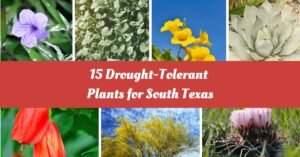Gardening in Texas can be challenging, especially with the scorching heat and limited water resources. However, there is hope for all green thumbs out there!
By incorporating these plants into your garden, you can create a beautiful, vibrant landscape that thrives even during the driest times.
In this article, we will explore a diverse range of plants well-suited to Texas’s unique climate. From vibrant succulents to hardy native grasses, there are countless options to bring color and life to your garden while conserving water.
Best Drought-Tolerant Plants For Texas
When selecting drought-tolerant plants for your Texas garden, it’s crucial to choose species that can withstand high temperatures and minimal rainfall. Here are a few fantastic options:
1. Texas Sage (Leucophyllum spp.)
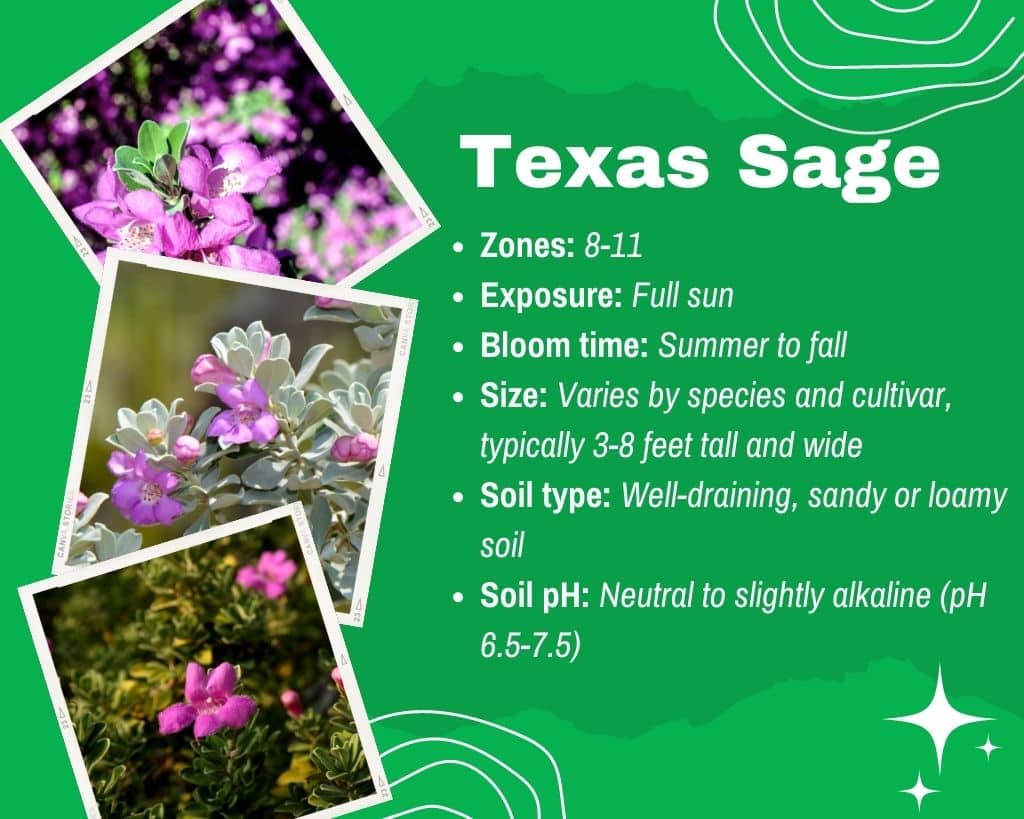
Texas sage is a popular Texas native well-known for its beautiful purple flowers and attractive gray-green foliage. It thrives in Texas’s hot, arid conditions and adds a splash of color to any garden.
Growing this plant requires patience, which can take a couple of years to establish fully. After that, you don’t have to worry about its maintenance due to its ability to tolerate harsh conditions.
Companions: Blue Mist Shrub (Caryopteris x clandonensis), Mexican Bush Sage (Salvia leucantha), Butterfly Weed (Asclepias tuberosa), and Autumn Blaze Maple (Acer x freemanii’ Autumn Blaze’)
Varieties: Green Cloud, Sierra Bouquet, Thunder Cloud, Compacta, White Cloud
2. Purple Coneflower (Echinacea purpurea)
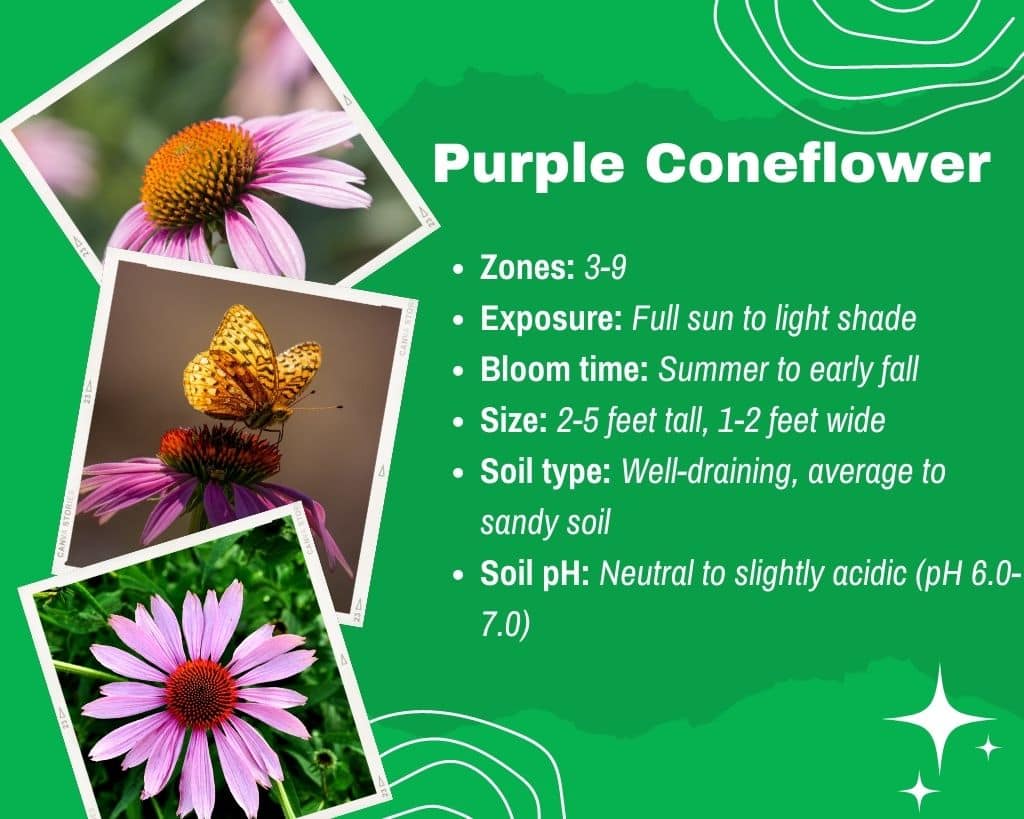
This native perennial is not only beautiful but also attracts butterflies and bees. With its vibrant purple petals, the Purple coneflower is a hardy and water-efficient addition to any Texas garden.
It is native to the central and eastern regions of the United States. It is very popular amongst gardeners in Texas, and the Purple coneflower is considered the most popular variety of coneflowers.
Companions: Russian Sage (Perovskia atriplicifolia), Shasta Daisy (Leucanthemum × superbum), Balloon Flower (Platycodon grandiflorus), and Blue Fescue (Festuca glauca)
Varieties: Magnus, Ruby Star, White Swan, PowWow Wild Berry, Hot Papaya
3. Blackfoot Daisy (Melampodium leucanthum)
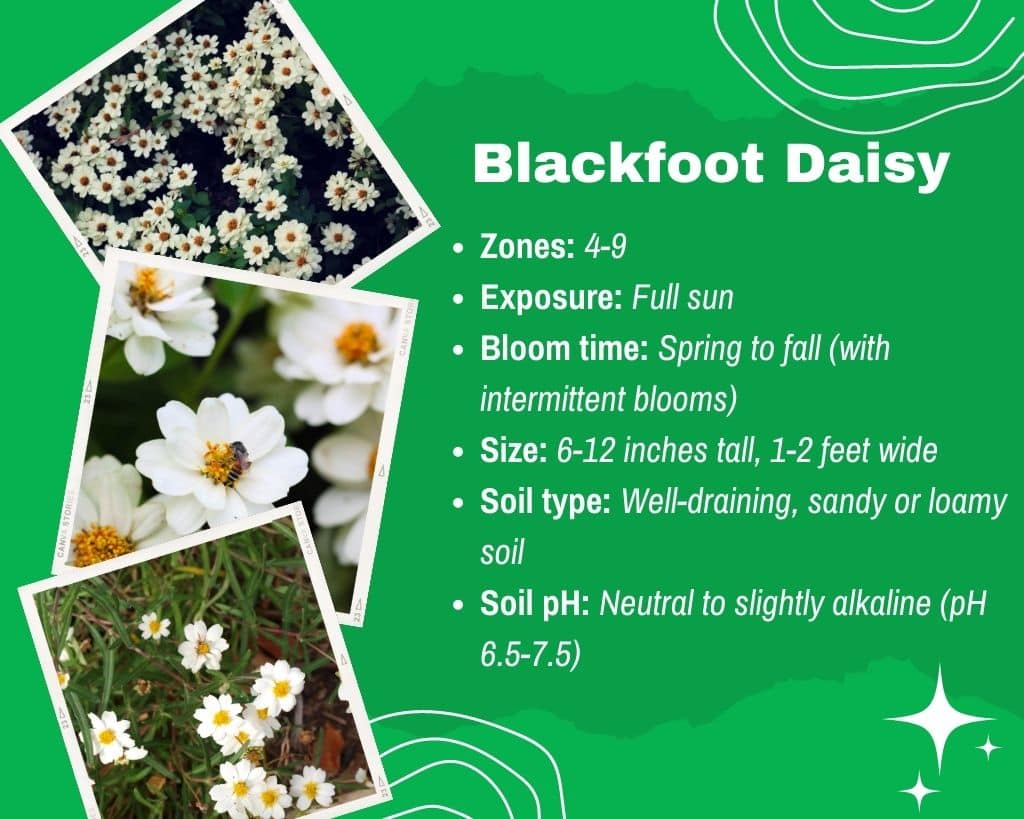
The Blackfoot Daisy is a resilient plant perfect for Texas gardens with its delicate white flowers and greyish-green foliage. It requires minimal water and thrives in full sun.
Blackfoot Daisy is known for its long blooming period and low-growing nature, ideal for borders, containers, and xeriscape gardens.
Companions: Blue Eyed Grass (Sisyrinchium bellum), Desert Four O’Clock (Mirabilis multiflora), Purple Three-Awn (Aristida purpurea), and Canyon Sage (Salvia lycioides)
Varieties: Lemhi, Medicine Wheel, Mountain, Daisy Topia, Gold Medallion
4. Pride of Barbados (Caesalpinia pulcherrima)

This eye-catching shrub features vibrant red and orange flowers, adding a tropical touch to your garden. The Pride of Barbados is heat-tolerant and adapts well to drought-like conditions.
Also known as Peacock Flower, Caesalpinia, and Dwarf Poinciana, butterflies love this evergreen plant. It can be planted in a mixed border setting, slopes, or pathways.
Companions: Bird of Paradise (Caesalpinia gilliesii), Yellow Trumpetbush (Tecoma stans), Blood Lily (Scadoxus multiflorus), and Mexican Petunia (Ruellia simplex)
Varieties: Phoenix Bird, Compton, Majestic Red, Yellow Bird
5. Red Yucca (Hesperaloe parviflora)

A popular choice for drought-tolerant landscapes, the Red Yucca is known for its graceful arching foliage and coral-colored tubular flowers. This ornamental plant can withstand harsh, dry weather with minimal water.
Its highly drought-resistant nature enables it to grow in the desert and rock gardens. You can also plant them in large containers.
Companions: Desert Marigold (Baileya multiradiata), Little Leaf Cordia (Cordia parvifolia), Kangaroo Paw (Anigozanthos spp.), and Blue Elf Aloe (Aloe x ‘Blue Elf’)
Varieties: Brakelights, Perpa, Yellow Flame, Straight Up Red, Coral Glow
6. Mexican Feathergrass (Nassella tenuissima)
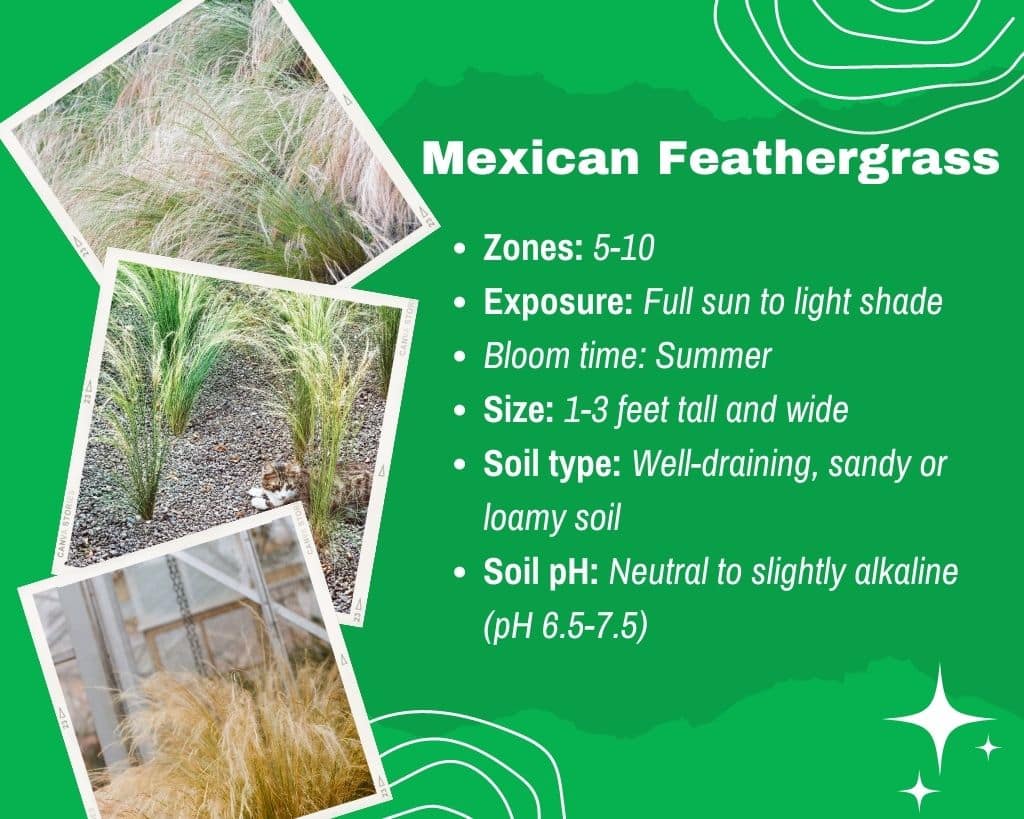
Adding a touch of elegance to your garden, the Mexican Feathergrass is a drought-resistant ornamental grass. Its wispy, emerald-green foliage sways gracefully in the breeze, creating a mesmerizing effect.
It has originated from the mountainous regions of Central Texas, West Texas and New Mexico. It is primarily planted in dry patches in a garden as a ground cover.
Companions: Desert Zinnia (Zinnia acerosa), Mexican Hat (Ratibida columnifera), Yucca (Yucca spp.), and Desert Willow (Chilopsis linearis)
Varieties: Pony Tails, Sirocco, Wind Dancer, Boulder Blue, Mexican Feather Grass
7. Agave (Agave spp.)
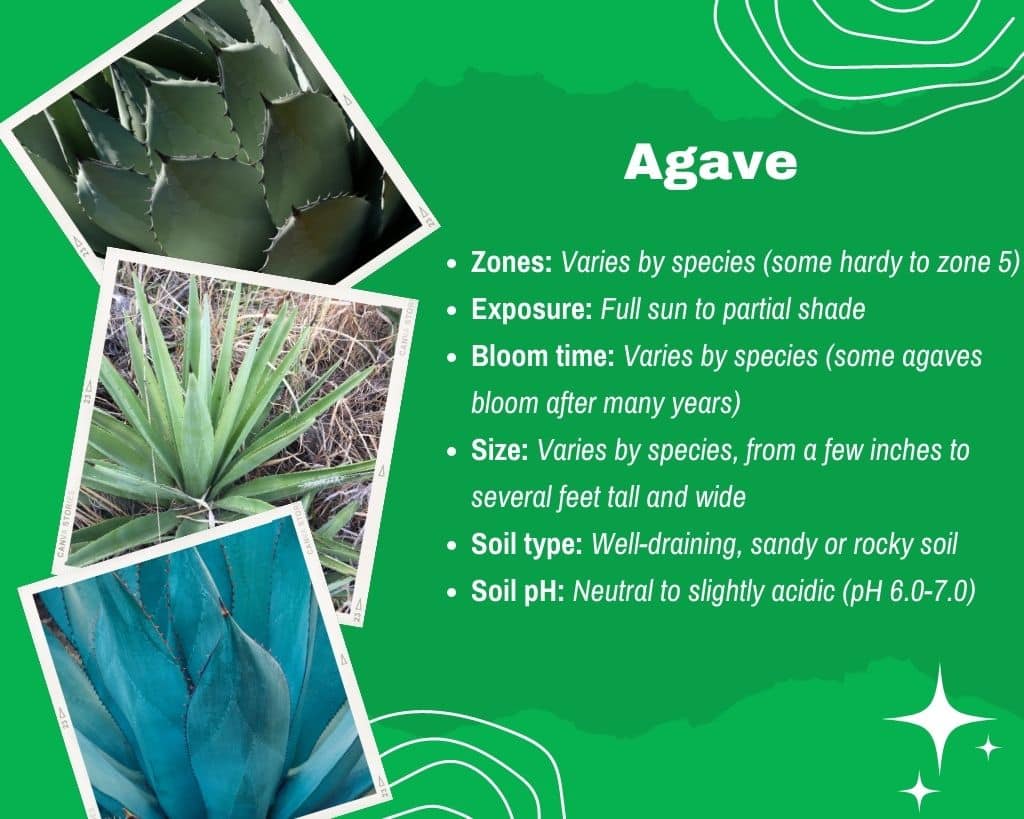
The Agave family offers many stunning succulents well-suited to the Texas hot summer. These low-maintenance plants come in various shapes, sizes, and colors, making them a versatile choice for any garden.
Originating from the Central regions of the United States, growing Agave has its benefits. It is a popular alternative to traditional sweeteners like sugar or honey. Also, Agave plants can create natural hedges or barriers due to their spiky and thorny leaves.
Companions: Desert Spoon (Dasylirion wheeleri), Sotol (Dasylirion texanum), Pink Muhly Grass (Muhlenbergia capillaris), and Ocotillo (Fouquieria splendens)
Varieties: Agave americana, Agave parryi, Agave victoriae-reginae, Agave Blue Glow, Agave Queen Victoriae
8. Jerusalem Sage (Phlomis fruticosa)

With its silver-gray leaves and yellow flowers, the Jerusalem Sage is an excellent option for a Texas garden. This tough plant thrives in extreme weather and well-drained soil.
This award-winning beauty is native to Europe. However, it can be found commonly in different parts of the U.S.
It can be established in different garden settings, such as coastal or cottage gardens.
Companions: Russian Sage (Perovskia atriplicifolia), Liatris (Liatris spicata), Pineleaf Penstemon (Penstemon pinifolius), and Blue Star Juniper (Juniperus squamata’ Blue Star’)
Varieties: Pink Bouquet, Moroccan Beauty
9. Esperanza (Tecoma stans)
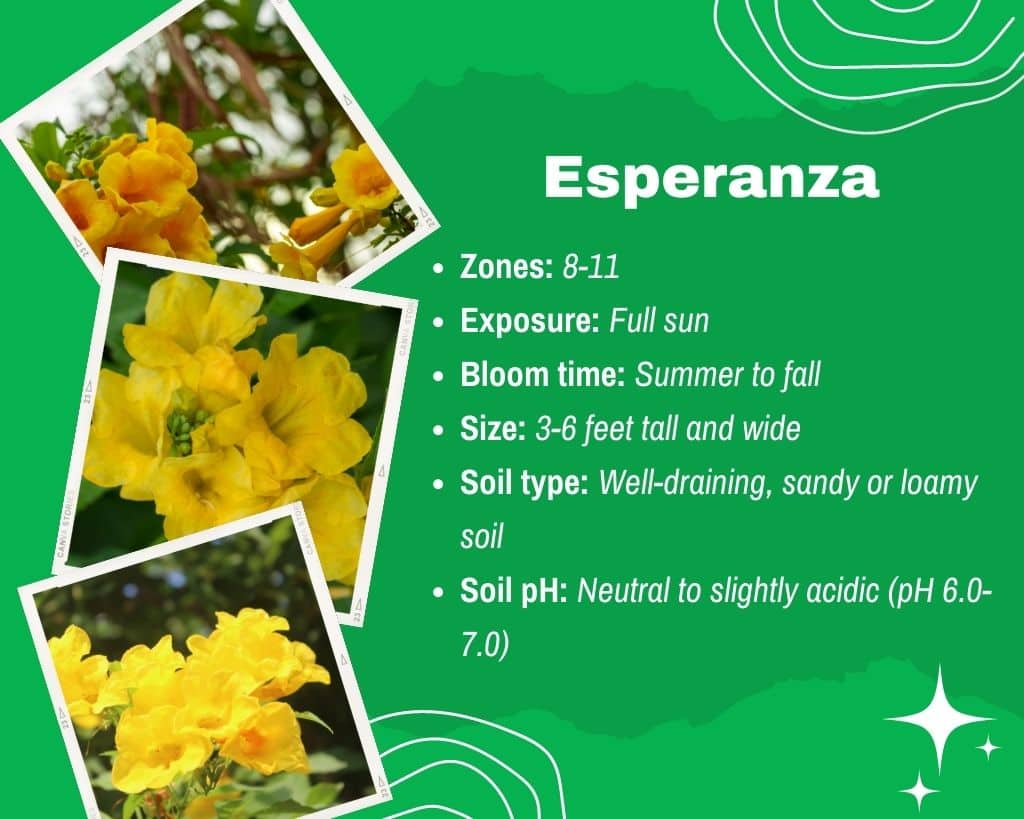
Also known as Yellow Bells, the Esperanza is a beautiful flowering shrub that can withstand longer periods of drought. Its bright yellow, trumpet-shaped flowers bring color to any garden.
This flowering shrub has a lot of varieties that can be used in different landscape settings. For example, larger varieties can be used as hedging plants.
Dwarf varieties are planted as ground covers in dry areas. They can also be grown in large containers.
Companions: Yellow Bird of Paradise (Caesalpinia gilliesii), Purple Heart (Tradescantia pallida), and Texas Star Hibiscus (Hibiscus coccineus)
Varieties: Gold Star, Bells of Fire, Yellow Bells, Orange Jubilee, Sparklette
10. Mexican Hat (Ratibida columnifera)
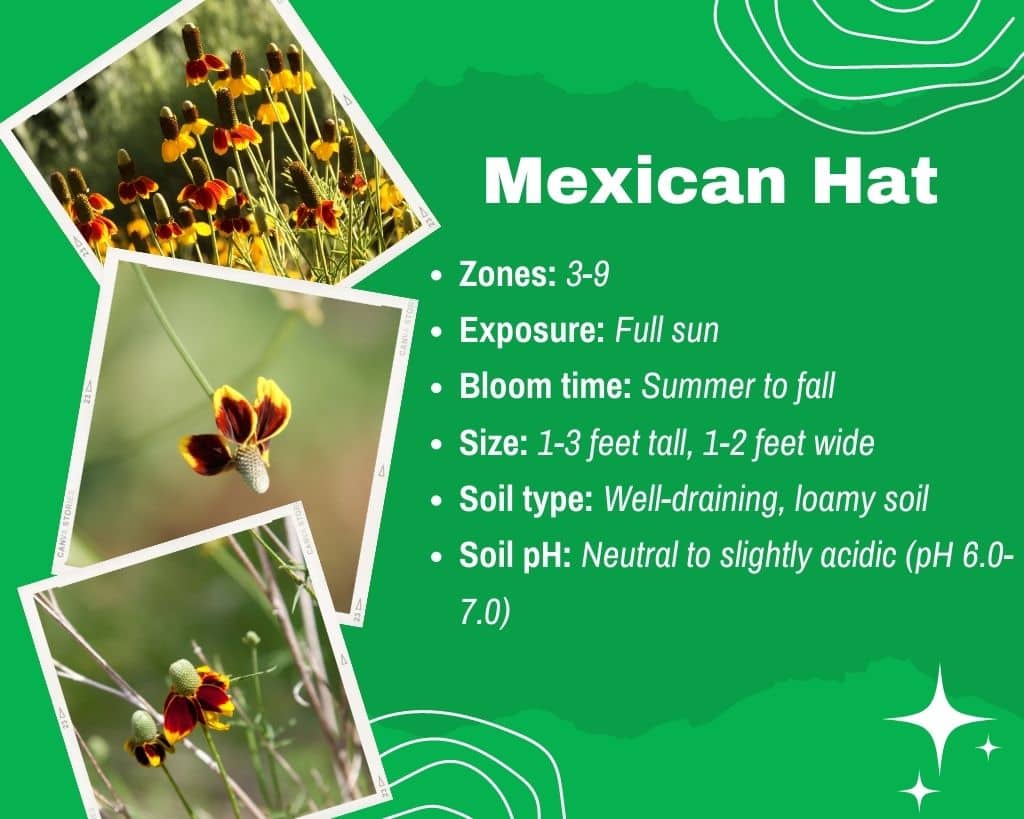
This native wildflower features distinctive cone-shaped centers surrounded by drooping petals resembling a sombrero. The Mexican Hat thrives in Texas heat, dry soil, attracting butterflies and bees to your garden.
It is an excellent choice for cottage gardens, meadows, and borders. Mexican Hat flowers’ unique and eye-catching appearance also makes them suitable for cut flower arrangements.
Companions: Black-Eyed Susan (Rudbeckia hirta), Mexican Sunflower (Tithonia rotundifolia), Chocolate Flower (Berlandiera lyrata), and Plains Coreopsis (Coreopsis tinctoria)
Varieties: Red Midget, Prairie Coneflower, Yellow Coneflower
11. Gulf Coast Penstemon (Penstemon tenuis)

With its vibrant tubular flowers ranging from pink to violet, the Gulf Coast Penstemon is a showstopper in Texas gardens. This tough perennial is well-suited to dry conditions and provides a nectar source for hummingbirds.
As its name suggests, Gulf Coast Penstemon is particularly well-suited for coastal gardens and landscapes. It can be incorporated into garden settings such as flowerbeds, borders, and rock gardens.
Companions: Blue Salvia (Salvia farinacea), Winecups (Callirhoe involucrata), Gulf Muhly (Muhlenbergia capillaris), and Texas Lantana (Lantana urticoides)
Varieties: Pensacola Pink, Gulf Coast Penstemon, Purple Passion
12. Desert Marigold (Baileya multiradiata)
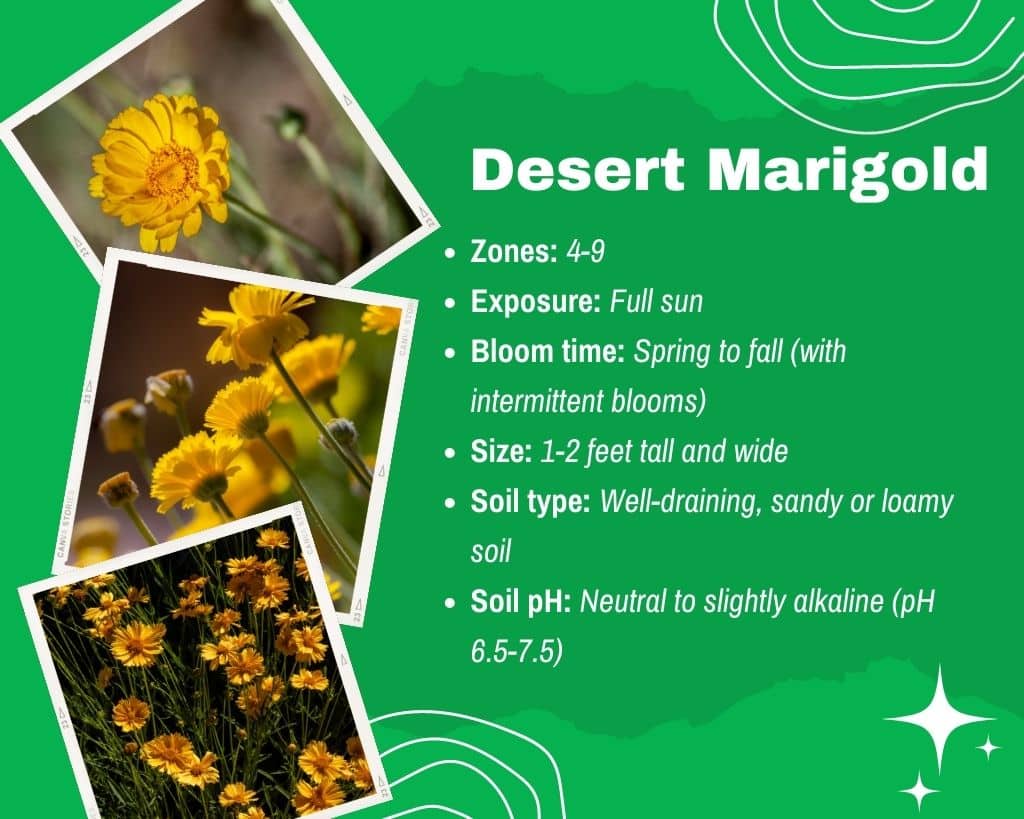
The Desert Marigold graces Texas gardens with its bright yellow flowers and stunning foliage. This hardy perennial attracts pollinators, thrives in full sun and partial shade, and requires little water once established.
This low-growing plant can be a great addition to rock gardens, containers, and borders. You can also plant them along pathways.
Companions: Apache Plume (Fallugia paradoxa), Desert Bluebells (Phacelia campanularia), Mexican Gold Poppy (Eschscholzia californica), and Blue Sage (Salvia azurea)
Varieties: Harvest Moon, Standing Ovation
13. Lantana (Lantana camara)
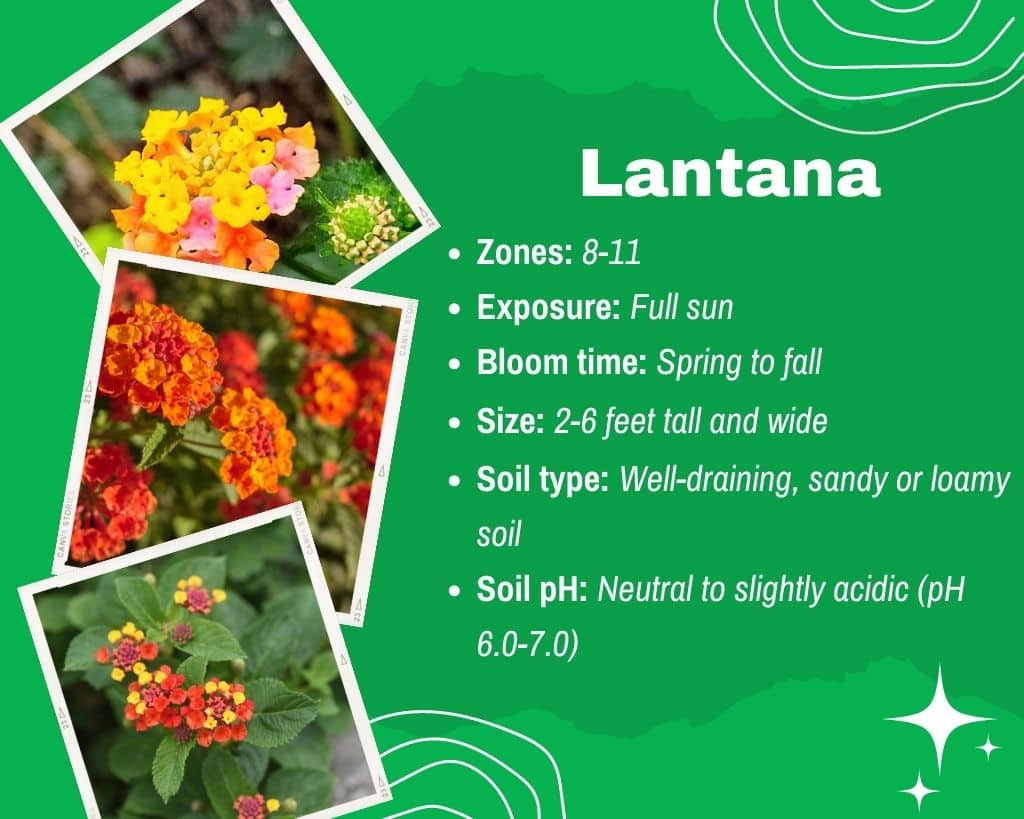
Lantana is a popular choice for Texas gardens due to its vibrant flower clusters and heat tolerance. These drought-tolerant shrubs in various colours attract butterflies while adding a splash of color to your landscape.
Lantana is native to Central and South America. It is commonly used as ground covers or in hanging baskets.
Companions: Rock Rose (Pavonia lasiopetala), Pink Skullcap (Scutellaria suffrutescens), Mexican Heather (Cuphea hyssopifolia), and Autumn Blaze Maple (Acer x freemanii ‘Autumn Blaze’)
Varieties: Dallas Red, New Gold, Miss Huff, Trailing Lavender
14. Silver Ponyfoot (Dichondra argentea)
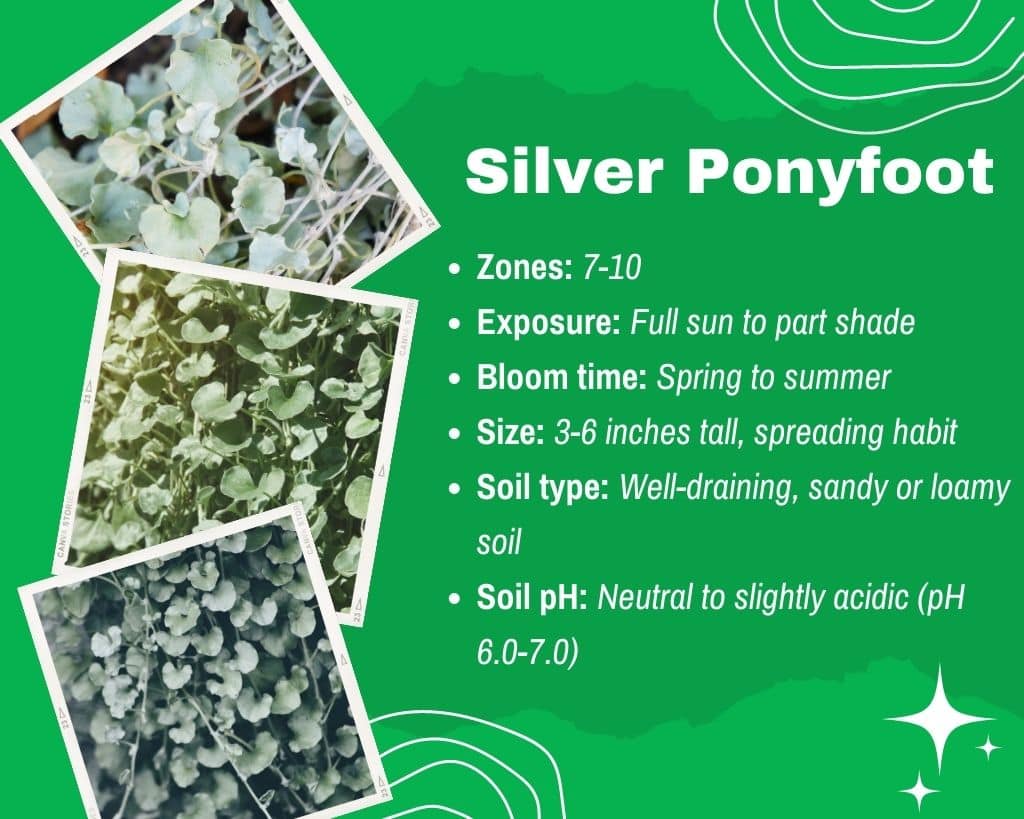
This drought-tolerant ground cover features silver-green leaves that create a stunning carpet effect. Silver Ponyfoot is well-suited to Texas gardens because it can withstand heat and low water conditions.
If you’re looking for a plant that controls soil erosion, silver ponyfoot can be the perfect option. It can also be beneficial in controlling weeds as well. Indeed a versatile plant. Isn’t it?
Companions: Purple Heart (Tradescantia pallida), Woolly Stemodia (Stemodia lanata), Silver Falls (Dichondra argentea ‘Silver Falls’), and Blue Sedge (Carex glauca)
Varieties: Silver Falls, Emerald Falls
15. Dusty Miller (Jacobaea maritima)

Dusty Miller is an attractive silver-leafed perennial that thrives in dry conditions. Its foliage provides an aesthetic contrast when paired with colorful blooms in your garden. Dusty Miller is known for its drought tolerance and is a popular choice for Texas landscapes.
Companions: Blue Oat Grass (Helictotrichon sempervirens), Silver Bush (Convolvulus cneorum), Snow-in-Summer (Cerastium tomentosum)
Varieties: Silverdust, Cirrus, New Look
16. Texas Redbud (Cercis canadensis var. texensis)
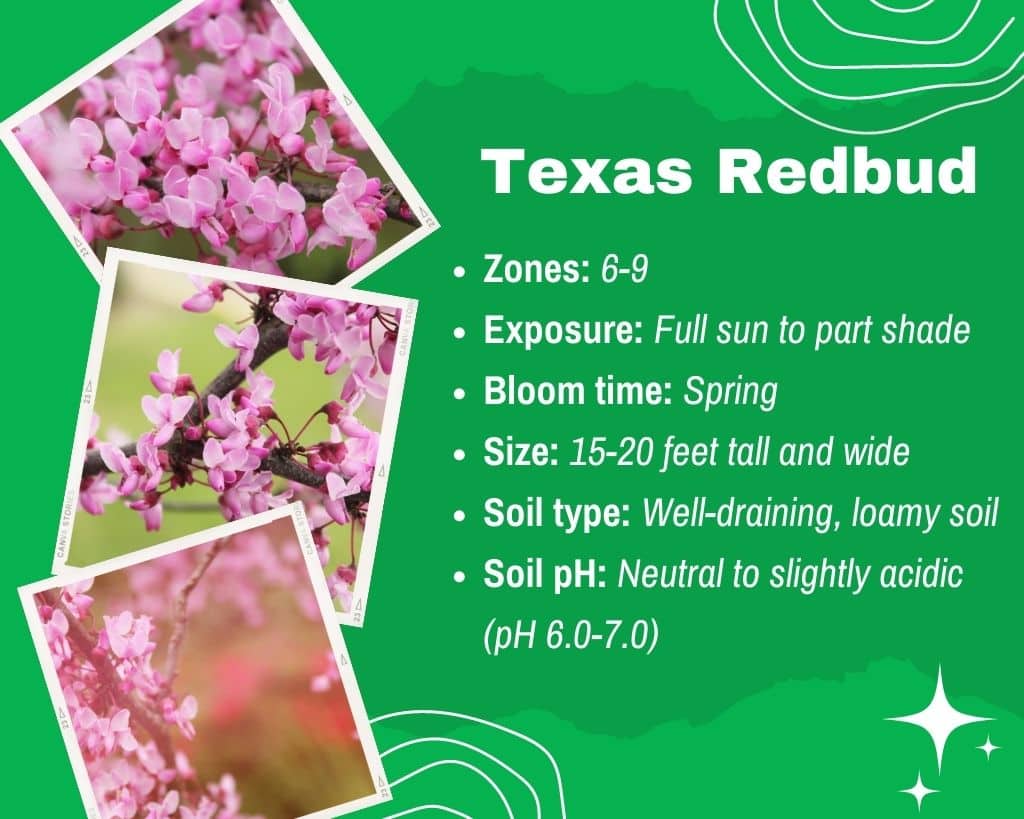
Known for its stunning purple and pink flowers, the Texas Redbud is a small, ornamental tree that thrives in Texas’ arid climate. It provides shade, visual interest, and beautiful flowers in the early spring.
Companions: Flame Acanthus (Anisacanthus quadrifidus), Red Columbine (Aquilegia canadensis), Flame Honeysuckle (Lonicera sempervirens), and American Beautyberry (Callicarpa americana)
Varieties: Oklahoma, Texas White, Texas Red, Merlot
17. African Daisy (Osteospermum spp.)
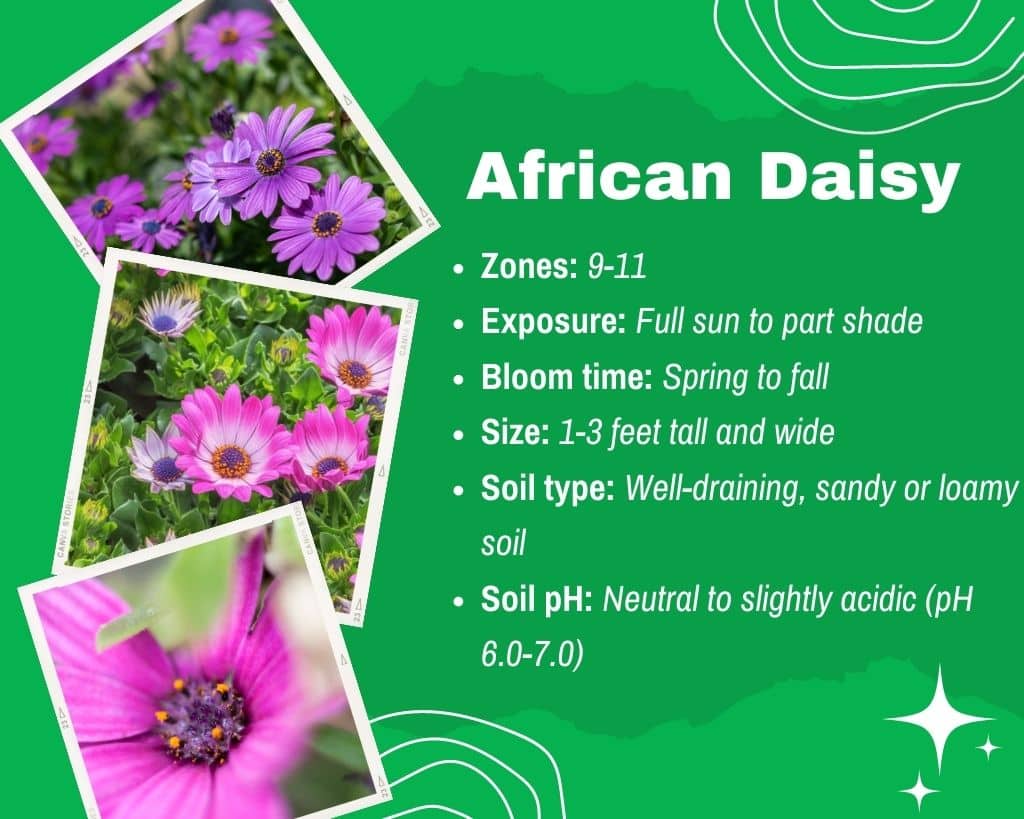
African Daisy is a striking annual or perennial with daisy-like flowers in vibrant shades of purple, pink, yellow, or white. These flowers bloom profusely and can withstand the heat and aridity of Texas summers.
Companions: Verbena (Verbena spp.), Desert Marigold (Baileya multiradiata), Desert Milkweed (Asclepias subulata), and Yellow Bells (Tecoma stans)
Varieties: Serenity Lavender Bliss, Voltage Yellow, Zion Copper Amethyst
18. Firebush (Hamelia patens)
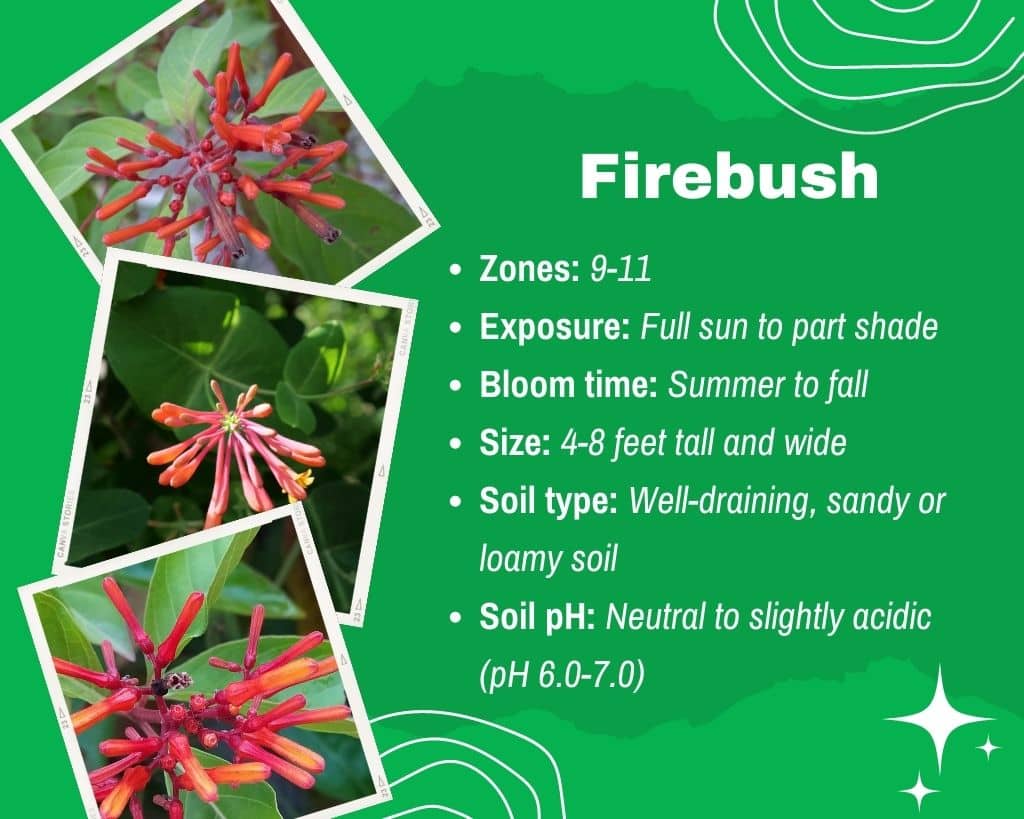
Firebush is a tropical shrub that adapts well to Texas conditions. Its clusters of tubular orange or red flowers attract hummingbirds and butterflies while providing color to your garden.
You can also plant them in flower beds to create an eye-catching look. However, make sure that the flower beds are not shaded.
Companions: Turk’s Cap (Malvaviscus arboreus), Mexican Flame Vine (Senecio confusus), Red Shrimp Plant (Justicia brandegeana), and Texas Sage (Leucophyllum spp.)
Varieties: Firefly, Brazos, Lime Sizzler
19. Gulf Muhly (Muhlenbergia capillaris)

Gulf Muhly is an eye-catching ornamental grass with feathery pink to purple plumes that grace Texas landscapes. Drought-tolerant and low-maintenance, this grass adds a touch of beauty and elegance.
With these incredible drought-tolerant plants, you can create a thriving and visually appealing garden while minimizing water usage. In the second part of this article, we will explore more options and discuss additional considerations for a successful Texas garden.
Companions: Lindheimer’s Muhly (Muhlenbergia lindheimeri), Pink Skullcap (Scutellaria suffrutescens), Scarlet Beebalm (Monarda didyma), and Purple Fountain Grass (Pennisetum setaceum ‘Rubrum’)
Varieties: Regal Mist, Pink Flamingo, White Cloud
20. Lamb’s Ear (Stachys byzantina)
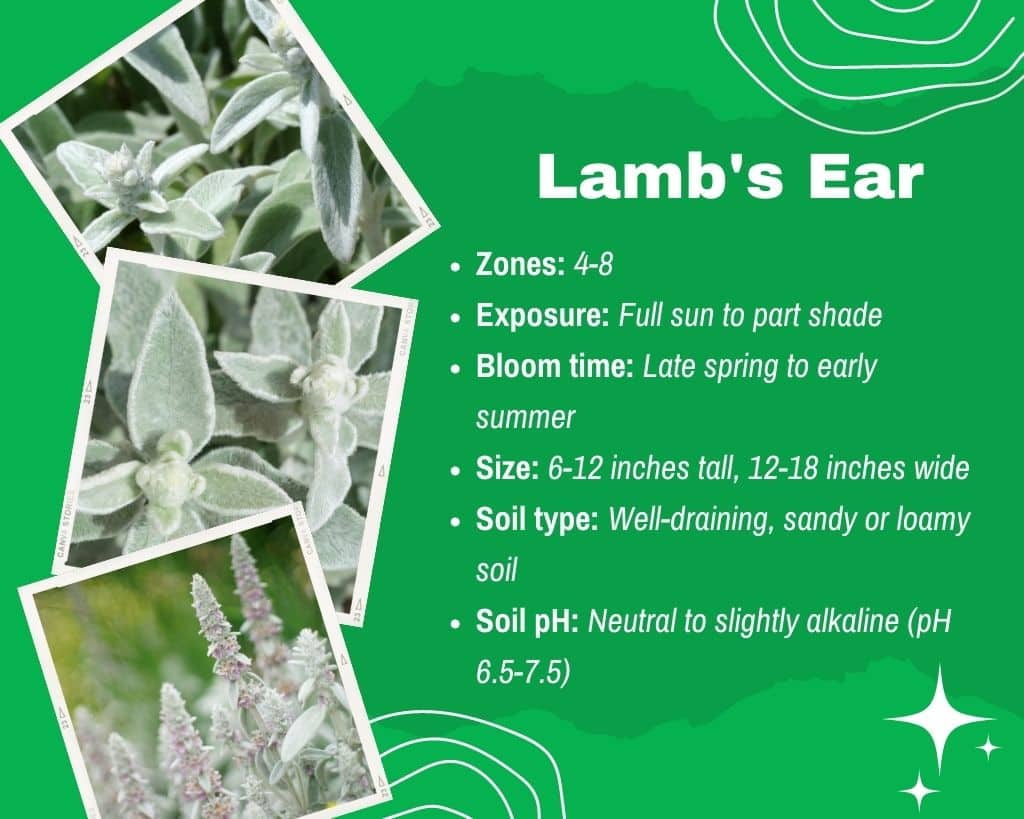
Lamb’s Ear is a unique perennial with soft, silvery foliage that resembles a lamb’s ears. This plant is not only drought-tolerant but also deer-resistant. Its velvety foliage adds texture and interest to any garden.
Companions: Russian Sage (Perovskia atriplicifolia), Catmint (Nepeta spp.), Society Garlic (Tulbaghia violacea), and Lavender (Lavandula spp.)
Varieties: Big Ears, Helene von Stein, Silver Carpe


